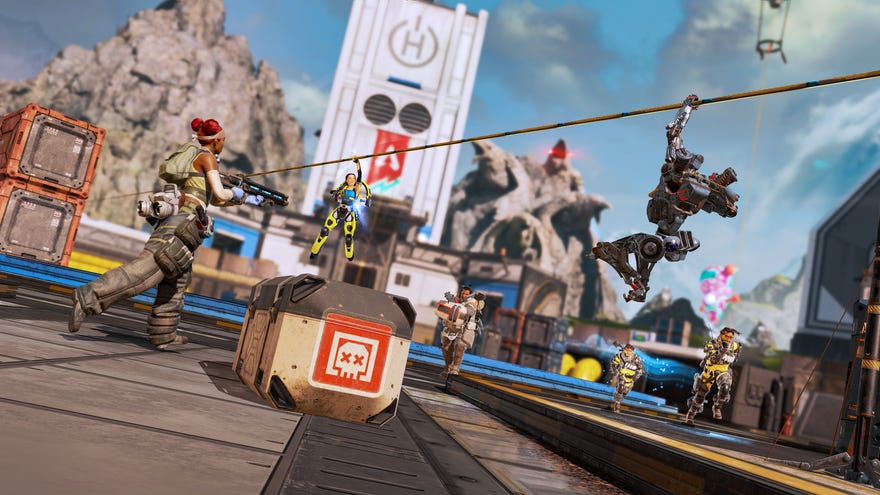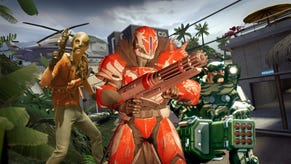5 years of Apex Legends: how "surreal" success became a fight to stay fresh
Respawn on their battle royale's past, present, and future
If there’s a secret to how Apex Legends has endured the past five years, an era marked by as many FPS failures as successes, then it might be this: there are no sacred cows in live service. Since its surprise launch in February 2019, developers Respawn Entertainment have chopped and changed everything from hitbox-shrinking Naruto run animations to entire character designs and ability kits, gutting and reworking gear and class mechanics along the way. The incoming Season 20 update, titled Breakout, represents the latest large-scale rejig, adding upgradeable skill tress for its playable Legends that promise MOBA-esque progression and the maddest fights yet.
Then again, if you actually ask Respawn’s Apex team how they reached this point – as I did when I visited their Los Angeles offices for a Season 20 test run – you’re unlikely to get just one answer. Rather, the battle royale’s unusual longevity in a fiercely contested space is more often attributed to those ongoing work-and-rework efforts themselves, the scope of which sometimes remains a surprise to the developers themselves. As does, according to lead game designer Devan McGuire, Apex’s success.
"I don't think anyone knew what the game was going to be like back in 2019," McGuire explains. "I don't think any of us would have expected it to have gone the way it had, or to have evolved the way it had. We had a lot of, like, ‘We know what the game is’ at that time.
"When Apex just came out, it was pretty much the Wild West."
"For Josh [Mohan, lead battle royale designer] and I, we were coming on board in 2019, so there was a bunch of ‘This is what Apex is, we don’t go here, we don’t do any of these things’. And to have it evolve beyond those initial barriers and to stretch those boundaries and figure out what it’s turning into... not to break apart from the core, exciting parts like the movement and the gunplay of Apex, but to evolve the battle royale format within the confines of Apex has been surreal."
"I don't think we would have expected to have this this lasting power and popularity when it launched," Mohan himself adds. "But it's been an amazing ride so far."
I remember launch night myself: the confused excitement at a surprise, Titanfall-linked (yet somehow titanless) take on what everyone still considered the PUBG formula. The thrilling chaos of that first drop, You Are the Jumpmaster blaring perhaps slightly too loudly in my ears. Finishing about 16th because I thought Wraith’s ultimate worked like in Portal, but laughing anyway. It was good times, and I wasn’t the only one enjoying them. Within 24 hours, over one million players had deafened themselves on the dropship theme, rising to 50 million within the first month, and ultimately hitting 130 million lifetime. As of late last year, publishers EA reckon Apex still pulls around 18 million active players a month. Even the biggest mecha-and-wallrunning fanatic must admit, Titanfall 2 could scarcely dream of such numbers.
Not that Apex has had a cushy ride. The live service industry shows that dwindling playerbases can happen to anyone, and the equal-or-bigger fortunes of Fortnite and Warzone mean there’s always another home for battle royale fans who lose interest. Or, indeed, those who leave in a rage – Respawn and EA have faced harsh backlashes over the not-so-micro microtransaction prices during certain “collection events,” including the most recent crossover with Final Fantasy VII.
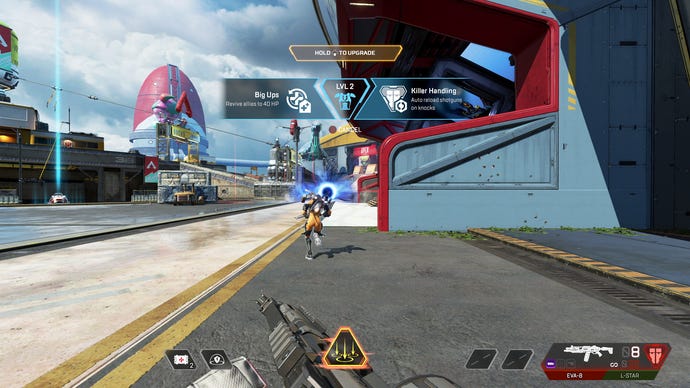
Between all these other games wanting a bite of Apex’s lunch, the ever-present risk of a dwindling playerbase, and a public tolerance for the free-to-play model that could charitably be described as "mixed," it might seem that developing a major live service game has become more difficult now than it was in the game’s youth. However, Respawn’s game design director Mike Renner suggests that’s not always the case. In fact, five years of experience have made daily operations a lot smoother.
"When Apex just came out," Renner says, "it was pretty much the Wild West of everyone just… not knowing how to operate a live service product, and just shooting from the hip and trying things to see what works and what works best for their team. And then, from a dev standpoint, versus a boxed product, you have an understanding of what to expect and what your cadence is.
"It's not like you're just working on something, and then it ships and it's you go see it on the shelf, and you're like 'Hey, we did it, now what?' This is just an ongoing flow and rhythm that, more and more, I feel like we have an understanding of what works, what doesn't work, and we can help each other out from that standpoint."
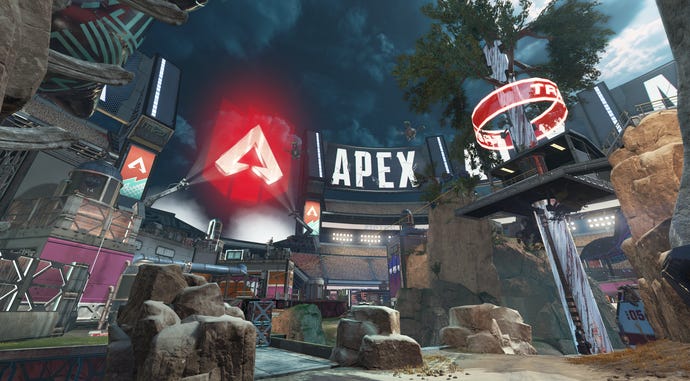
"At the beginning,” McGuire adds, "when we were 'the character-based BR,' with the strong movement base and background, there was a strong identity there to rest its laurels on. And we’ve seen other BRs coming into the fold that have been very character-focused or crazy movement-focused, and they fall off, and we’ve learned from those things. Then as for the ones that do stick, and are successful within the shooter genre, rise to fame and success, we’re keeping up with the excitement with our seasonal structure with things that we have planned over a year in advance. Versus the excitement, the new game that launches, it's always a stressful endeavour to be like, ‘Oh, no, people might want to gravitate towards that.’ But we have some strong things in our in our bucket that we want to push forward on.
"We're going to hold the line and keep moving forward with those ideas, and trying to make sure that we're still owning the space that we own in the way that we do. And evolving the game, so that it's not falling too stale or behind the times, is definitely an ongoing challenge that wasn't as prevalent in earlier days. But I think Apex has the brand identity and the wealth of things that we know we can improve on and evolve."
The most commonly employed formula for these seasonal updates has been to throw a new Legend into the mix, maybe a new weapon, and to blow up and rebuild chunks of a particular map. That changed in 2023’s Season 16, which skipped the addition of any new characters in favour of a comprehensive overhaul to the Apex Legends’ class system. Previously, the organising of Legends into classes was largely academic, with only Recon characters having a distinct, class-specific ability. Season 16 both expanded the range of classes and granted each one their own special set of tricks, like Assault characters being able to carry more ammo, or Supports getting the chance to craft respawn banners for teammates.

An eagerness to expand players' toolkits is clearly visible in the DNA of Season 20, which also forgoes a new Legend in favour of making sweeping tactical overhauls. Perhaps that’s why there’s little apprehension among Respawn’s staff that this update lacks an eye-catching, hype-building new face: the model has worked before. McGuire even considers Season 16 among the game’s greatest individual successes, pointing to how it gave "strategic power and relevancy to characters and classes that didn't previously have it."
"That shifted the way that players can think about the game, and think about how they how they choose their Legend and their squad make-up," he explains. "It brought back a lot of people to re-explore and experiment again. Even if it didn’t touch on everyone’s feelings, because it was sitting on that strategic layer, and being something that you had to have a pretty good game sense to be aware of."
"Still, it was a pretty huge success and something that we were risking because at that time, we had launched a Legend every season. And that was gonna be the first season that we didn't. We took a big risk, moving away from that model and into something that was going to affect the community's appreciation of the game, and try to fix and stabilize some of the problems we had in the game over the addition of a new chess piece to the board."
Still, Season 20 isn’t just aiming to be 'another Season 16' again. The format is familiar, but the objectives are different, with a keener focus on reducing the impact of randomly generated loot pools and making match outcomes more dependent on the eventual victors’ choices. For instance, fighting early and often will still carry greater risk than making a safer, quieter drop, but winning those fights will yield greater rewards by securing Legend upgrades and higher shield capacity. With body armour removed from findable 'ground loot' pools entirely, dealing damage is now the only reliable way to earn this immense advantage, outside of the Evo Harvesters (boxes of XP, basically) dotted around the map.
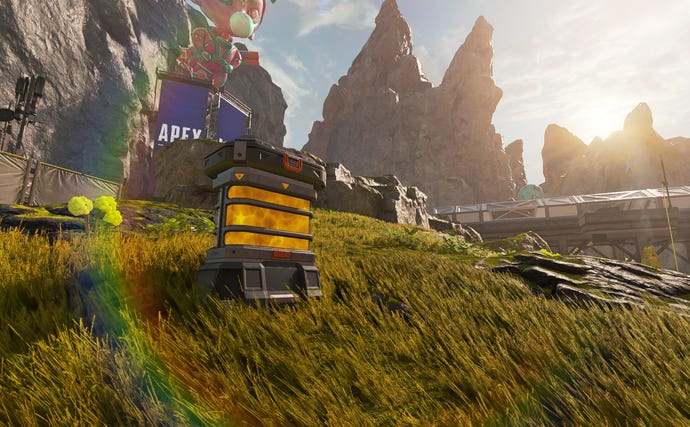
"The goal here was to remove that really critical part of the game from RNG, and put it in your hands, give you agency over how you progress throughout a match," says Mohan. "One point of friction we were feeling is that players too often just felt like their game was just a tie decided by RNG. 'Oh, they found a purple and I didn’t, that’s it, I lose.' RNG is a big part of battle royale, and we want that to remain so, but that critical element of 'What’s your health pool?' is just too important to leave to chance. So what we're doing now is integrating that into this Legend upgrade system, in order to really make you feel like you have a sense of progression through the match and that progression is because of things you did."
"It's really interesting to see how you add something new, and then it connects with all the other pieces that are already there."
These changes aren’t just about fairness, either, as McGuire reckons the quest for Evo points will make every match that little bit more interesting – as well as prevent what he calls the "paralysis vector" of players too scared to fight because of the random possibility that their foes have lucked into better shields.
"This new system," he says, "creates that progression of survivability across the game, which means that you're constantly looking for opportunities to move to engagements, to think, 'What’s the next Evo Harvester I can go for? Where can we get that next bucket of XP? Is it worth engaging that fight? Or should we play smart try to rotate through this Harvester, grab the bins that are in that Point of Interest, or scan that care package, try to get some points on the team before we engage?' And it creates more strategies and things to think about that aren't just a numbers game off the cuff."
Without having played Season 20 in the disarray of public servers, I harbour some worry that this rich-get-richer system could fill regular matches with even more unkillable, laser-aiming terminators than there already are, leaving casual players more likely to die early, underlevelled deaths. Nevertheless, this update isn’t simply a gift to the sweats. It’s now easier to climb at least one tier up a Legend's skill tree, sometimes without firing a shot, so there’s something to be gained so long as you aren’t destroyed in seconds.
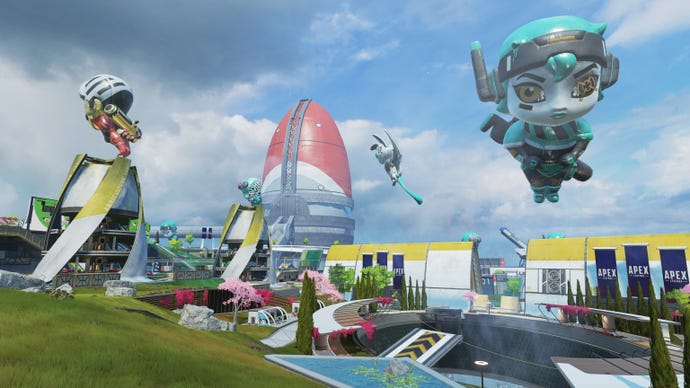
For McGuire, these "little milestones" are vital to establishing a sense of progress and achievement, even in games that end up as losses. Moreover, many of the individual ability upgrades were designed to enable a broader range of playstyles than had been suitable, if at all possible, in previous seasons.
"Everything was in our hands to kind of tune and balance and say, 'Your character is worth this within the confines of the game.’ Now you can say, ‘Well, I played Mirage this way,' or 'I play Watson this way.' And now I can take those upgrades, as I get further and further into the game, and push on the playstyle of the things that I like to be good at as that character. That was something that we didn’t have before, and that we wanted to put into the players’ hands, to give them more agency, more depth, more feeling of expression for the playstyles that they get across with those characters. As well as giving us, as developers, more levers for tuning and balancing the Legends in future seasons, or opportunities to go, ‘Oh, this is a dominant build that everyone's taking for Catalyst, or everyone's taking for Horizon, what can we do to shake that up.'"
"There's some learnings from other games, but they had to be incorporated in very different ways.”
This all sounded familiar to me – the hero-based multiplayer game adding small yet impactful skill trees, which would themselves go on to become a mechanism of balance tuning. But never mind 2019; I can’t help but think back to 2016, when Dota 2’s earthshattering 7.00 update revealed its all-new Talents system. Yet McGuire admits it was a rival MOBA, not so much Dota, that inspired the Legends’ expanded powers.
"I would be lying if I said that it didn't come from experiences with those kinds of games, or that the possibility of this type of thing working within Apex – like, using those games as references and leverage points to see how successful they were in a competitive environment – made its way into the thought process. I would, however, anchor this in more Heroes of the Storm, which is much more teamplay-focused. I am a huge fan, personally, of Heroes of the Storm. I know it's seen a decline, but the talent system allowed you to push your character and push the build of that particular hero a little bit further than the system that Dota eventually took on. It was a really good idea for engaging the player at multiple points throughout the course of the match, allowing them to adapt to the playstyles were going forward.
"And I think there are learnings from that that we were able to incorporate. Not in the same way, obviously, because we can't just add new bags of tricks where you suddenly get explosive damage or something out of your Mirage tactical, but to give you some sort of agency over the way that you progressed across the game. It’s a pretty engaging system to put your mark on the game and put your mark on the characters that you own and champion as you go through. So yeah, there's some learnings from other games, but they had to be incorporated in very different ways."
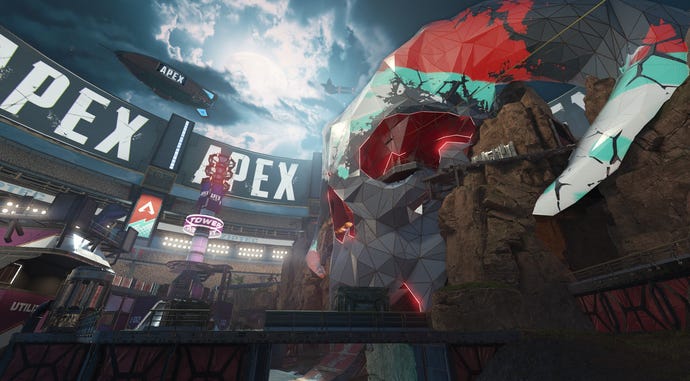
It’s easy to imagine the appeal of looking for outside inspiration, when Apex has needed regular updates for five years and has been in the works even longer. Is it tougher to keep things exciting when the game has been around for so long?
"I think the interesting thing about a game that's reached this level of maturity is that you can often find new things just from seeing how two things interact," Mohan replies. "It's really interesting to see how you add something new, and then it connects with all the other pieces that are already there. So as the game gets deeper, and there's more stuff in it, you can make a smaller change and it has bigger ripple effects, because it's touching all these other systems that already exist."
"I think that's a really important point," McGuire adds. "And I think that it can make things challenging when you've got all these pieces on the table, and they behave in a particular way, or you're expecting them to behave in a particular way. When you add something new to that pile, it has a very high risk of either overshadowing, or just falling short of something else.
“We see this with our Legend creation all the time. We have 26 Legends at this point, and because we have so many Legends, and each of them have to occupy their own narrow play space, there's a lot more effort that has to go into testing those characters across multiple play sessions to make sure that they're not just overshadowing another Legend of similar ilk or role. That they have their own way of expressing themselves in the game that isn't just 'Well, I'm also going to do shield healing.' It's a very difficult path to walk."

Walk it they shall, though. New Legends are always in the pipeline – a consequence of Respawn working months to a year in advance – and besides ensuring they can slot into the main battle royale mode, Apex Legends is usually revolving through revolving Limited Time Modes for players to try on the side. Season 20 brings yet another, Straight Shot, which heavily condenses the BR format with faster ring closures and a loot pool stuffed with pre-upgraded guns. I’ve tried this as well, and the truncated match times and more generous gear spawns do take a lot of the stress out. I suspect it will act as a refuge for less hardcore players, a possibility Mohan seems aware of when I ask about Apex’s future.
"I actually think Breakout is a good indication of the direction we want to take [Apex] in," he explains. "And you can see experiments we’re doing with our LTMs, like we had Three Strikes last season, we’ve got Straight Shot this season. Experiments with changing some of the other core systems in our game, and trying to make it an easier game to pick up and play, and to recommend your friend like, ‘Hey, come join, try it out with me.’ Just making it a game where there's a spot for everybody to come in and find a find their groove find a playstyle they enjoy."
It's an encouraging sign that Respawn aren’t just interested in handing their game over to just the highest-strung hotdroppers. Apex Legends is a competitive game and should stay that way – winning wouldn’t be fun otherwise. But personally? I’m hoping that while Season 20 doubles down on rewarding skillful play, the newness of those Legend upgrades (and the potential diversity of playstyles they enable) can recapture some of that 2019 magic. The gleeful, nobody-understands-anything bedlam of that night five years ago, one that heralded the establishment of a titan among shooters. Even without the titans.
